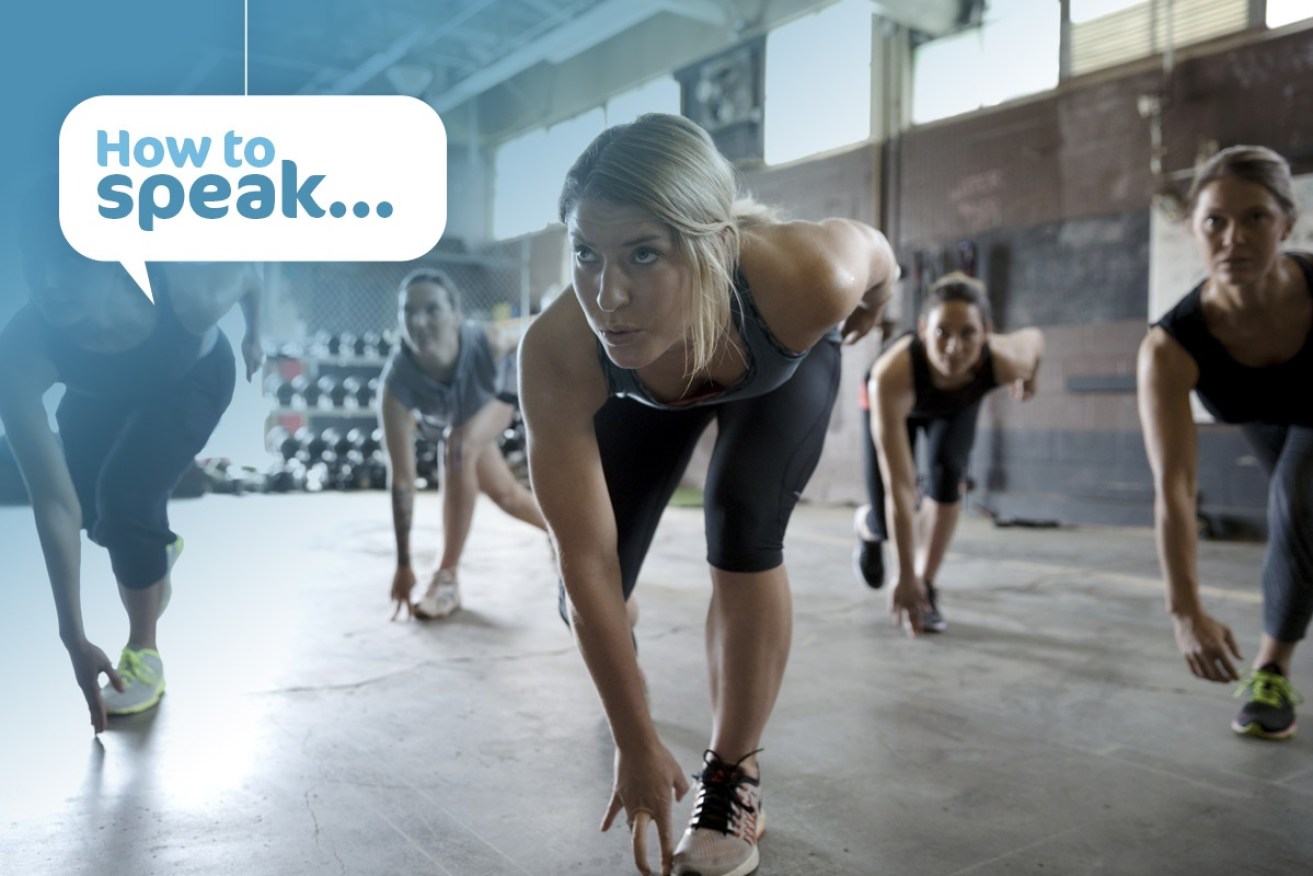Jargon made simple: How to speak … fitness


The hardest part about staying in shape is usually the exercises. But with so many new fitness trends sprouting online, learning the lingo can quickly weigh you down.
What are some common fitness buzzwords? Flex your brain muscles as we run through a few.
Aerobic v anaerobic training
Unlike the 1980s fitness trend, aerobic training usually refers to any exercise that raises your heart rate, and that you can do for a long, continuous period. Also called cardio, light jogging, gentle swimming and dancing are a few examples.
Anaerobic, literally means “without oxygen”, and includes exercises that make you quickly feel out of breath, such as a sprint.
Burpee
Burpee is a brutal whole body exercise that is frequently used in high-intensity training. There are many variations, but the standard burpee is done in four steps: squat down and lean forward; use your hands to thrust back into a plank (or high push up); immediately jump back into a crouching position; jump up into a standing position.
Variations include the box jump burpee, dumbbell burpee and one-legged burpee for those looking for a bigger challenge.
Concentric/eccentric movement
Concentric and eccentric movement refer to muscle contraction and lengthening, respectively. Both are needed for a proper strength workout, with the concentric phase increasing muscle tension to build muscle, and the eccentric phase lengthening the muscle on the ‘way down’. Bicep curls, calf raises and walking up and downstairs all improve concentric and eccentric movement.
Core
Your core is a group of muscles that protect your back and joints. In exercise, ‘engage your core’ is a common phrase used in Pilates or yoga classes. But many people mistake ‘engage’ for ‘suck in’ meaning they are not working the inner muscles properly. Switch on your core properly by using your inner abdominal and pelvic muscles to lift and tighten, instead of sucking in your belly.
DOMS
This is an acronym for delayed onset muscle soreness, and usually kicks in a few hours or a couple of days after intense exercise. This is most likely to occur if you haven’t done an activity for a while, or worked underused muscles without a proper warm-up. DOMS often goes away on its own, but next time try using smaller weights or doing fewer repetitions, don’t leave it too long between training sessions and always warm up and stretch afterwards.
Foam rolling
Once only used by professional athletes and physiotherapists, foam rollers are an inexpensive and convenient way to help release tight or sore muscles. It works by applying pressure and rolling on different points – such as your legs, upper thigh, sides, or even your arms – to release tension and ‘knots’. Foam rollers are now commonplace in many gyms and fitness centres, and are available for purchase in stores or online.
HIIT
HIIT is another acronym circulating the gym-sphere, and stands for high-intensity interval training. It is a whole-body workout that involves short bursts of activity usually with little rest in between. A HIIT workout might include squats, sit-ups, lunges, free weights and sprints, but there really is no limit to this versatile yet gruelling regime.
Isometric exercise
An isometric activity is a contraction of a single or group of muscles, but unlike concentric and eccentric movement, the muscle length does not change during the contraction. Isometric exercises, such as planks, wall sits and glue bridges, can increase stability when done properly.
Strength/resistance training
Strength training can be done with dumbbells, weights or simply your body weight. It’s sometimes called resistance training, and if done regularly, it’s a great way to increase or maintain muscle strength and build anaerobic endurance.
You can mix up your strength training each week by including a mix of body weight (push ups, squats), free weight (dumbbells, kettle bells) and resistance band (small bands, suspension ropes) exercises.
Suspension training/TRX
Suspension training is a form of strength exercise using ropes, usually suspended from a gym ceiling or parallel bar, to create resistance against the body. Former Navy Seal Randy Hetrick is credited for creating the Total Resistance Exercise equipment (TRX), which is now often seen in many gyms.








